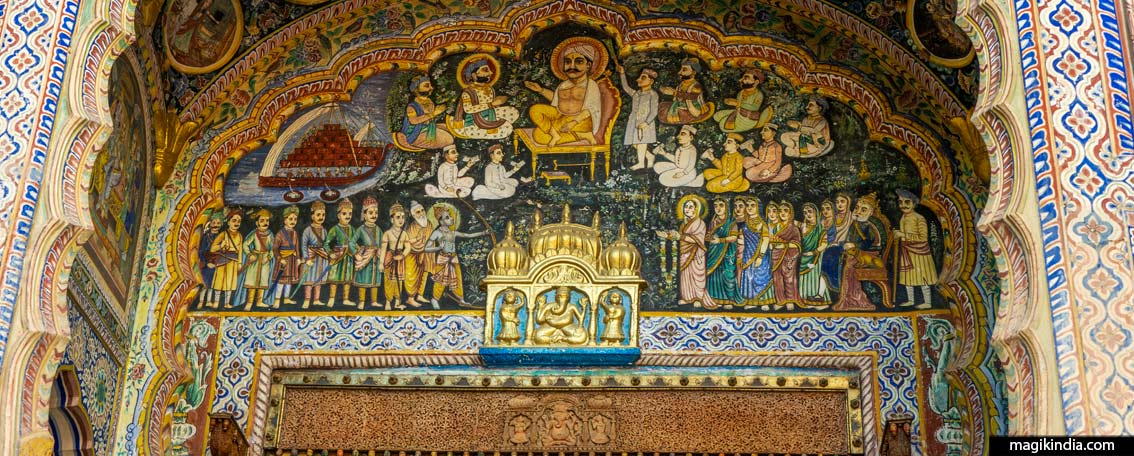
Shekhawati, Rajasthan’s open-air art gallery
Organised tours often bypass the Shekhawati region in northwest Rajasthan, yet in the 18th and 19th centuries it was one of Rajasthan’s richest regions. Wealthy Marwari merchants built huge mansions there, decorated inside and out with sumptuous frescoes in which Hindu mythology mingles with scenes from daily life. These masterpieces have earned the region a reputation as Rajasthan’s open-air art gallery.
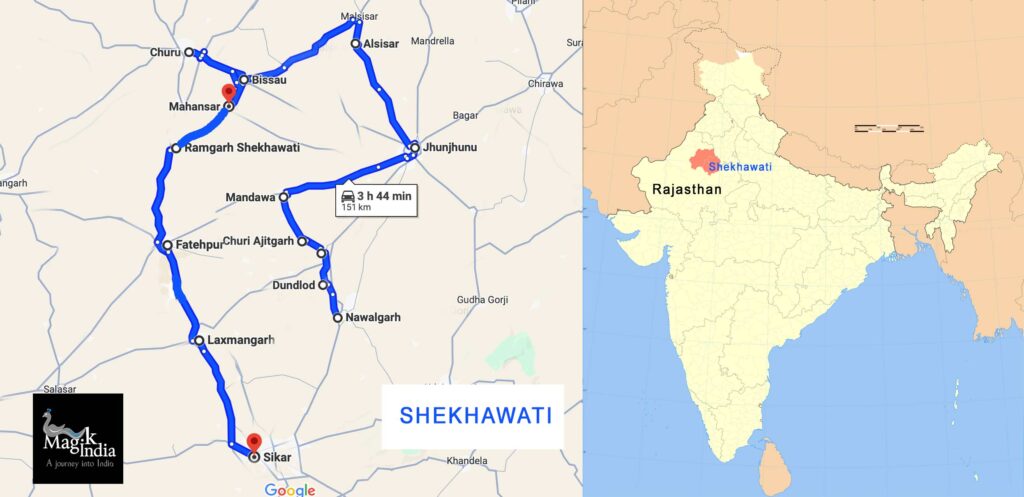
Shekhawati region covers a large part of northeastern Rajasthan, it includes the major cities of: Nawalgarh, Dundlod, Mukundgarh, Churi Ajitgarh, Mandawa, Jhunjhunu, Churu, Alsisar, Ramgarh, Bissau, Mahansar, Lakshmangarh, Fatehpur, Sikar.
Creation of Shekhawati
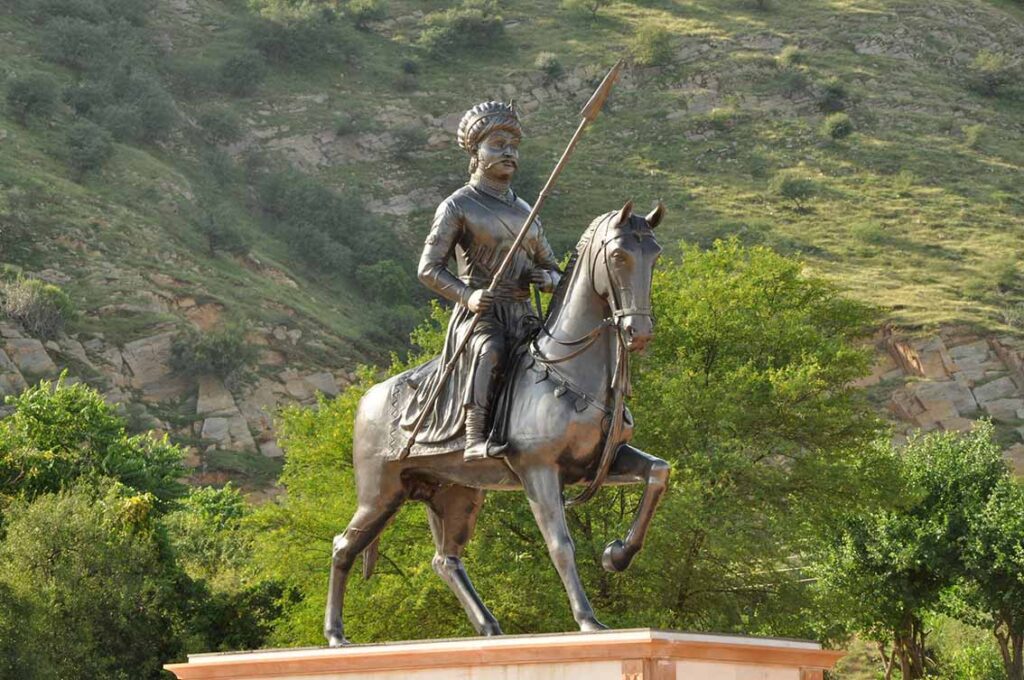
Shekhawati was founded by Rao Shekha Ji of Dhundhar (Jaipur region). He is related to the Rajput Kachhwaha clan of Jaipur-Amber. In 1471 CE, he refused to pay tribute to the Kachhawaha rulers and declared his independence. Thus, Shekhawati came into existence.
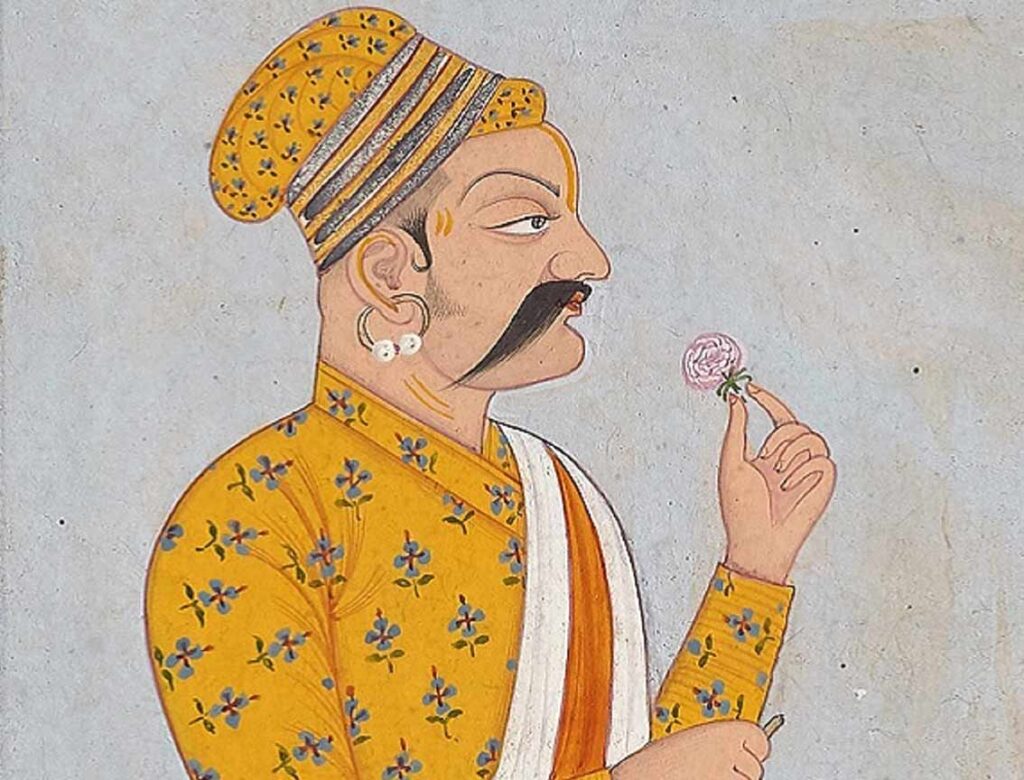
Rao Shekha Ji made several incursions into this region during the 15th century. Later his descendants who had friendly relations with the Kachhwaha Rajputs of Amber and the Mughals received several landed estates from the Mughal emperors. By the 18th century, almost the entire Shekhawati region came under the control of the Shekhawats.
Shekhawati was ruled by the Shekhawat Rajputs until India’s independence.
The Marwaris Merchands
Rajasthan has been a necessary passage for trade caravans since ancient times. They take the route from Delhi to Sindh via Bikaner and Jaisalmer.
In the early 18th century, Rajasthan’s roads became safer and shorter, and it escaped Maharashtra’s rebellions against the Mughal Empire. Commercial activity increased considerably.
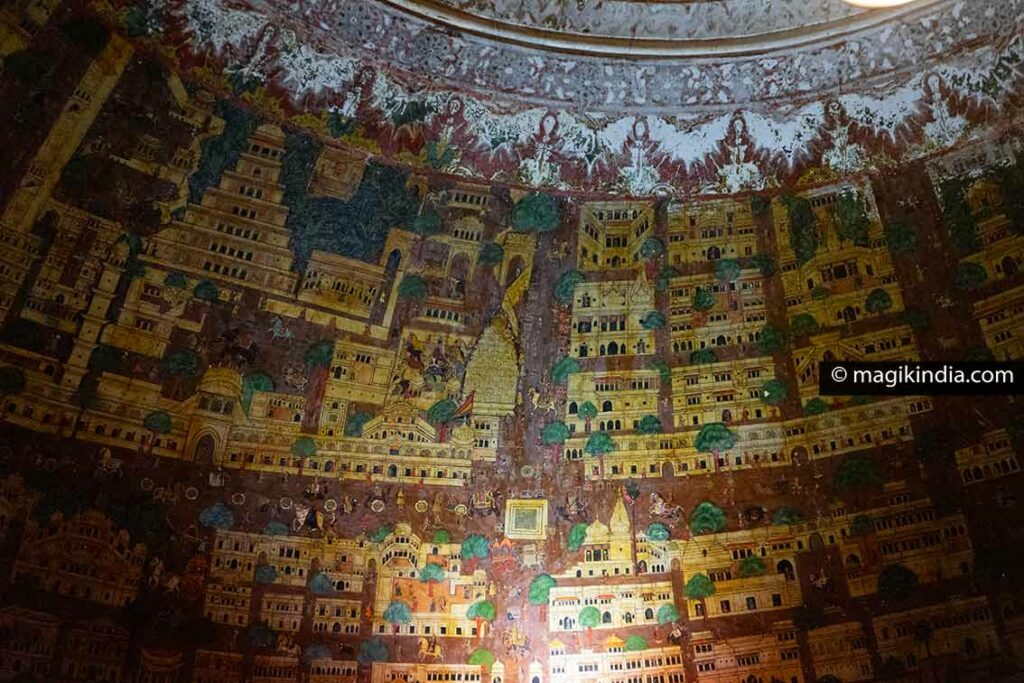
Thus, in the second half of the 18th century, Jaipur became an important trading centre. However, internal quarrels and a deficit treasury forced the rulers of Jaipur to impose heavy taxes on their territories. Bikaner followed suit.
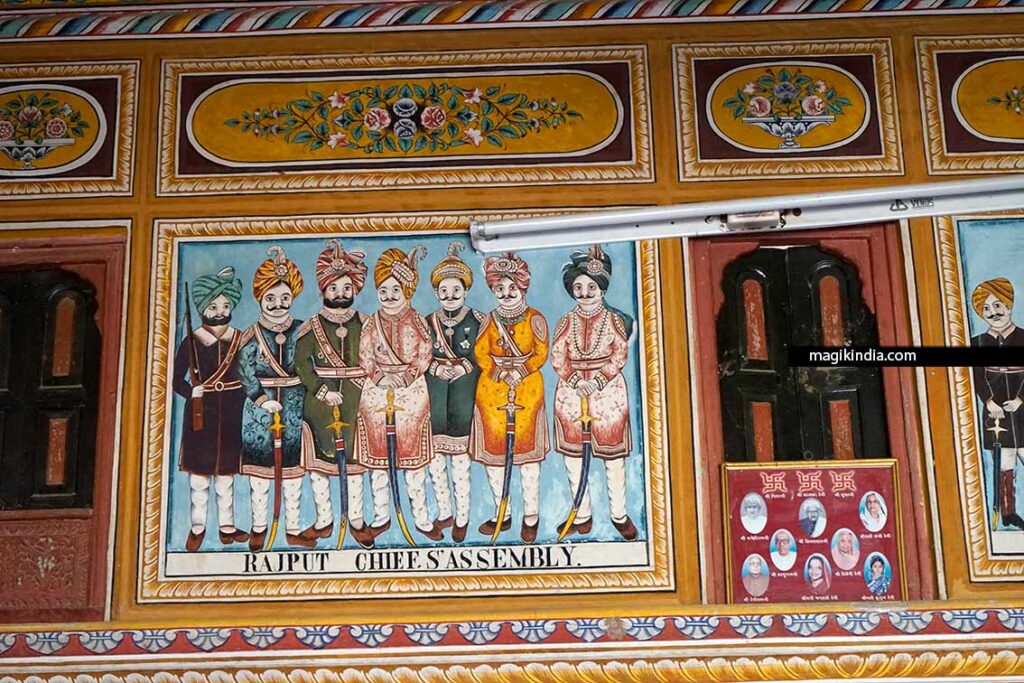
The Thakurs (local lords) of Shekhawati took advantage of this opportunity to divert trade routes by considerably reducing taxes. The region then became the most frequented by trade caravans.
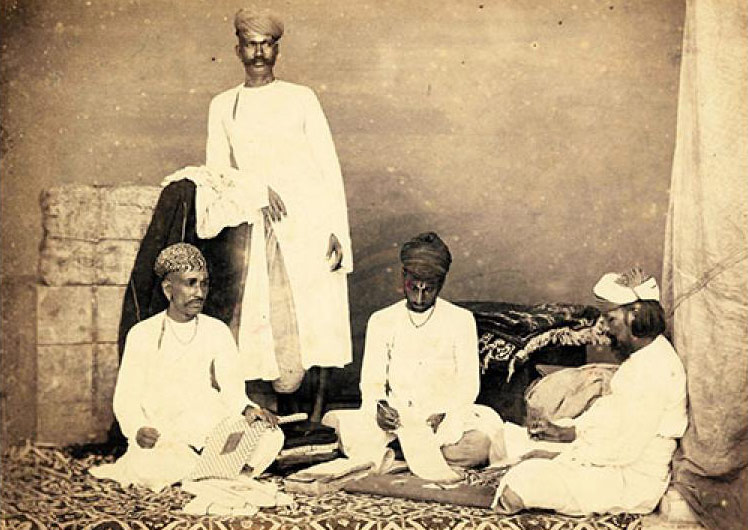
The Thakurs also encouraged the banias (traders), who are called “Marwaris” in Shekhawati, to settle in their territory. For more than 50 years, from 1740 to 1800 CE, Shekhawati became one of the richest provinces in India.
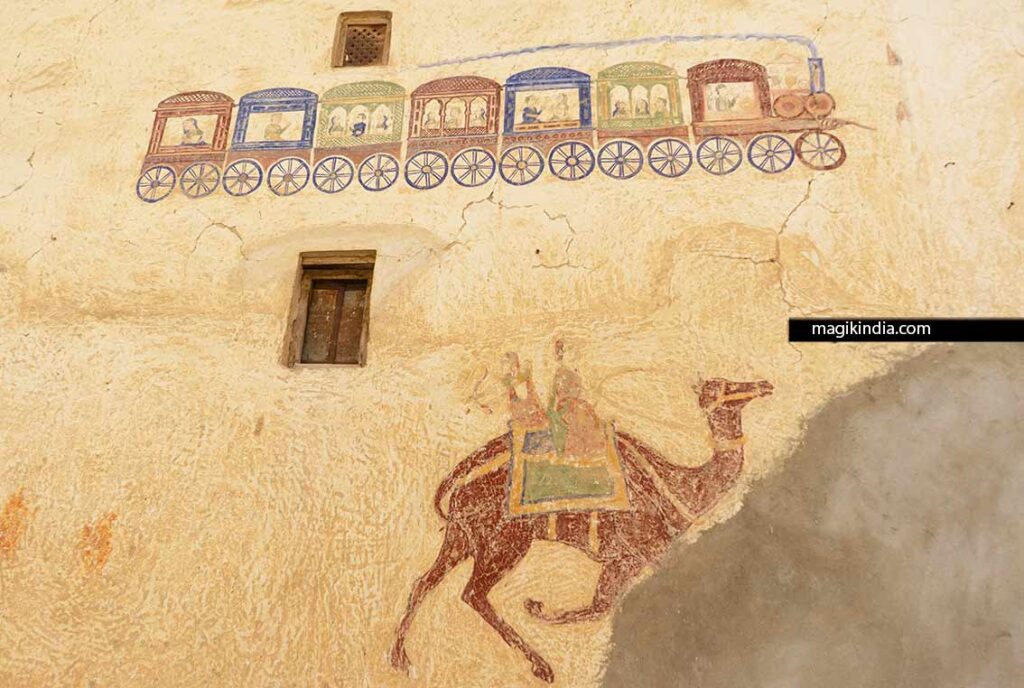
However, from the second half of the 19th century, the installation of a railway network by the British Raj and especially of ports in Bombay and Calcutta changed the model of trade. The prosperity of Shekhawati based on land routes ran out of steam.
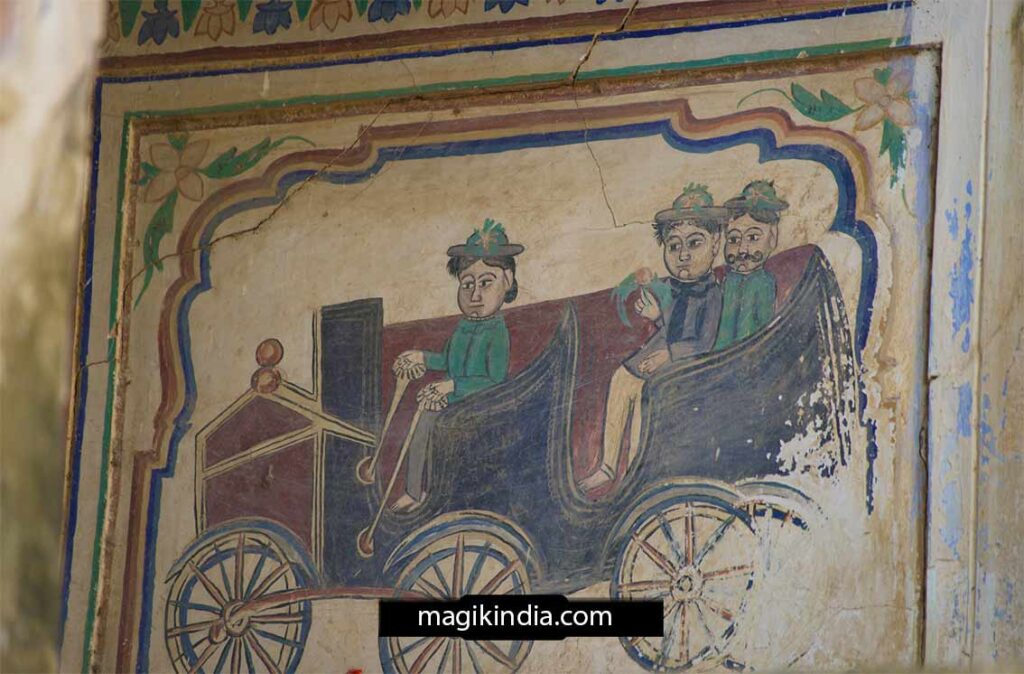
The Marwaris, however, as worthy businessmen, bounced back very quickly by migrating to the big Indian cities from 1820, mainly Mumbai and Kolkata, and further increased their wealth by investing in big industries, particularly cotton.
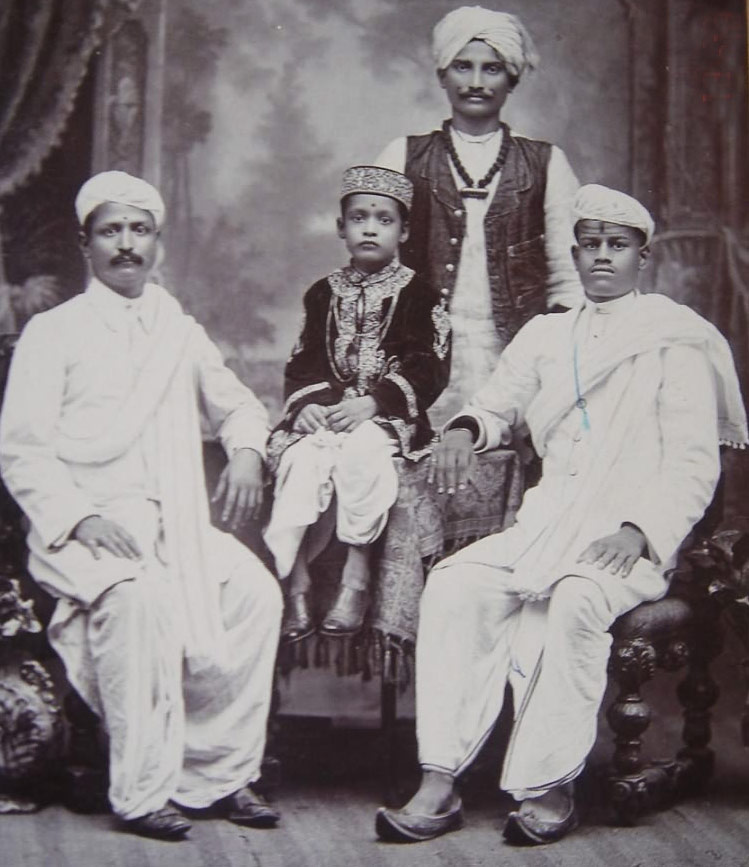
In the 19th and early 20th centuries, the Marwaris, whose fortune is unrivaled in India, built many grandiose residences (havelis) in the villages where their families still lived, which delight architecture lovers like me.
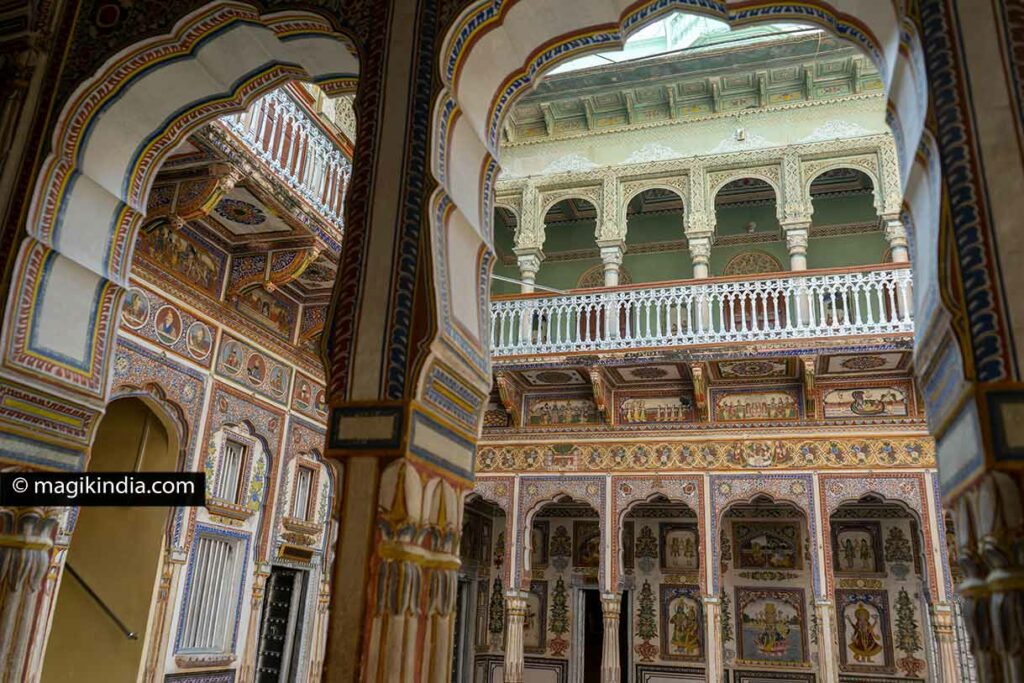
Even today, the descendants of the Marwaris of Shekhawati, the Birlas, Damias, Goenkas, Podars, to name a few, largely dominate the industrial sector in India.
Unfortunately, many of these magnificent mansions are in a state of advanced disrepair, although attempts have been made by the Indian government to raise awareness. A UNESCO listing would help to save these works of art and bring a second wind of tourism to this region.
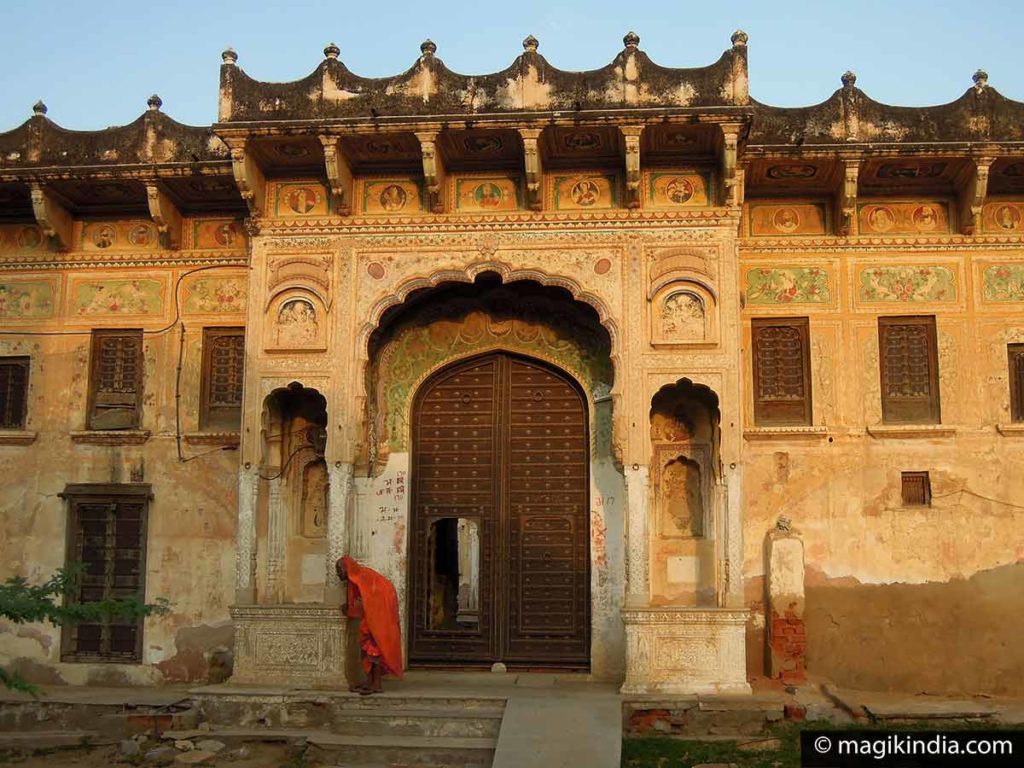
Shekhawati Festival
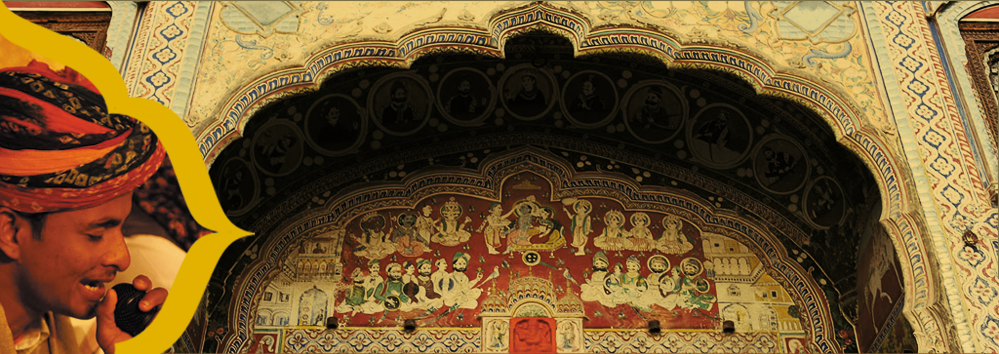
In the month of February, the Shekhawati region celebrates its precious heritage. Organised jointly by the tourism board and the Morarka Foundation, the Shekhawati festival includes guided tours, handicrafts, a livestock fair, organic cooking classes and award ceremonies. The main festivities are held at the Mandal Surya Stadium in Nawalgarh; the others in the Sikar, Jhunjhunu and Churu districts.
The main cities of Shekhawati
Nawalgarh
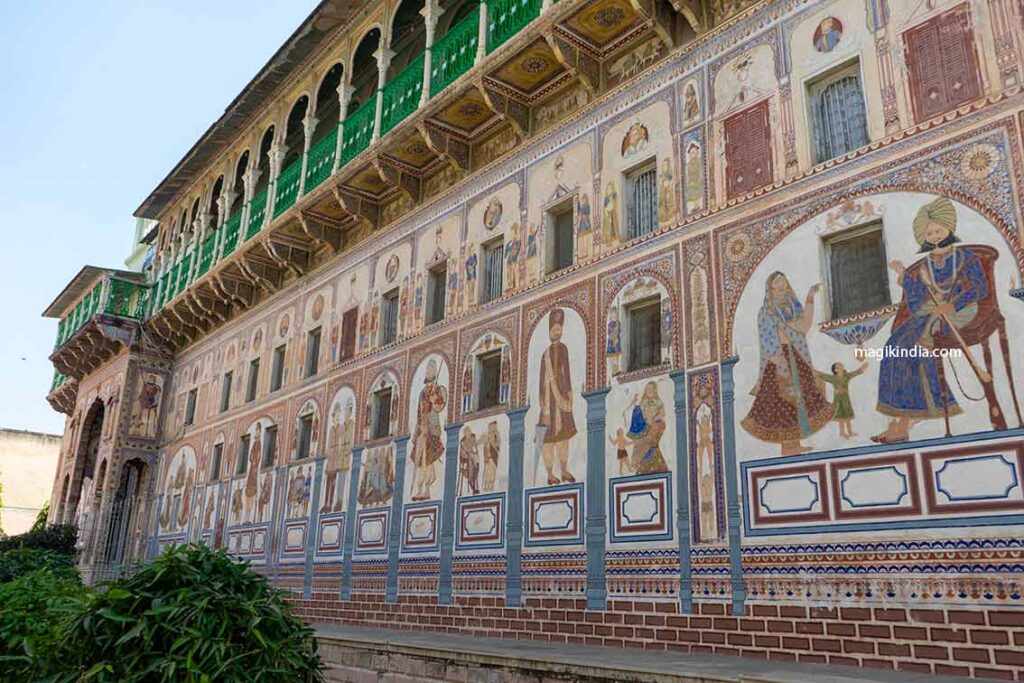
Nawalgarh is one of the major cities of the region, it was once called the golden city of Shekhawati because of its opulence. It has a good number of havelis in more or less good condition. The one that cannot be missed is the Podar haveli built in the 1902s by Mr. Anandilal Podar and which has more than 750 frescoes.
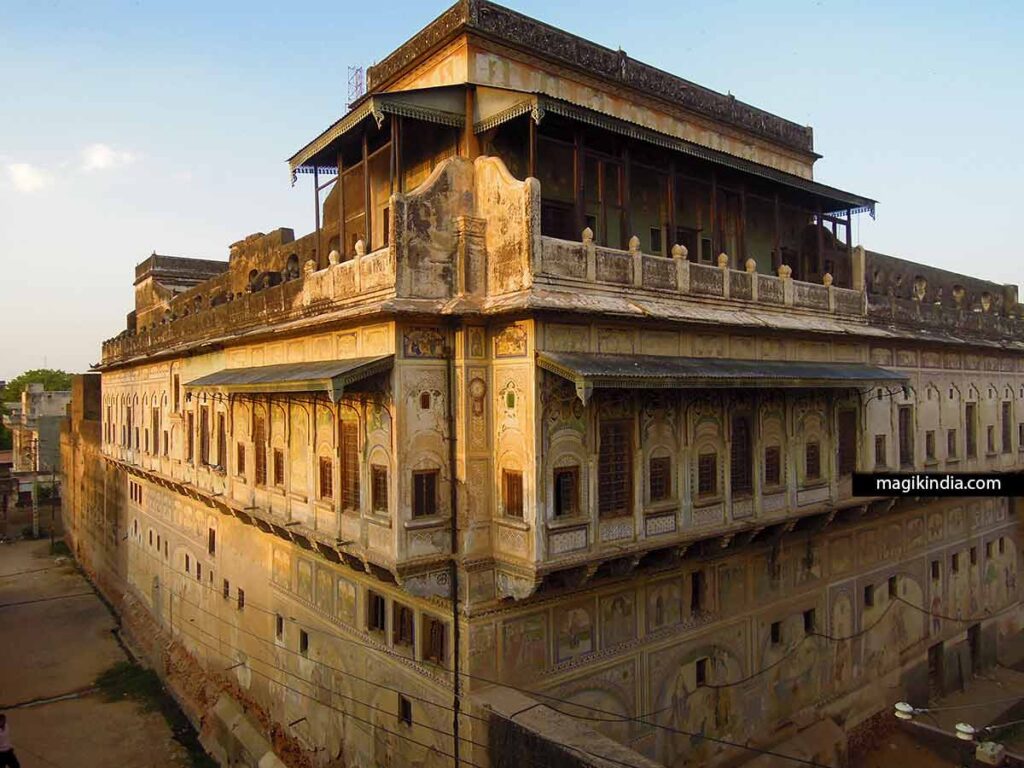
The mansion has been converted into a museum by Mr. Kantikumar R. Podar, grandson of Mr. Anandilal B. Podar; it serves as a cultural centre showcasing the heritage of Rajasthan and promoting tourism in the Shekhawati region.
READ MY ARTICLE ABOUT NAWALGARHDundlod
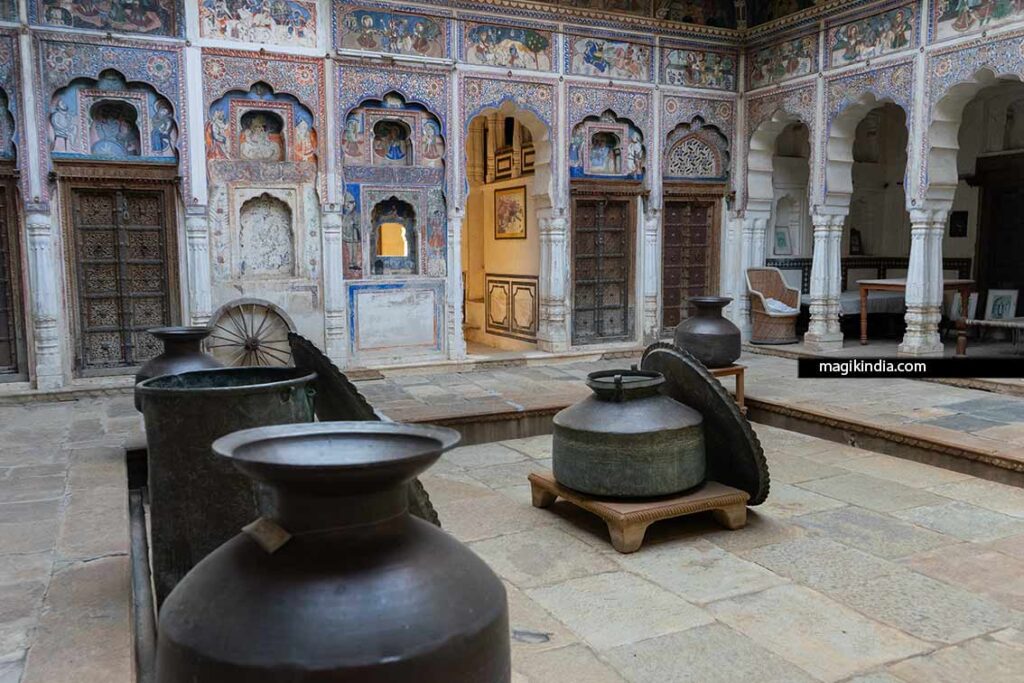
The small village of Dundlod, a few kilometres from Nawalgarh, also has some beautiful buildings, the best example of which is the Goenka haveli. Wonderfully renovated and converted into a museum, it consists of several “paintings” depicting scenes from everyday life in the past.
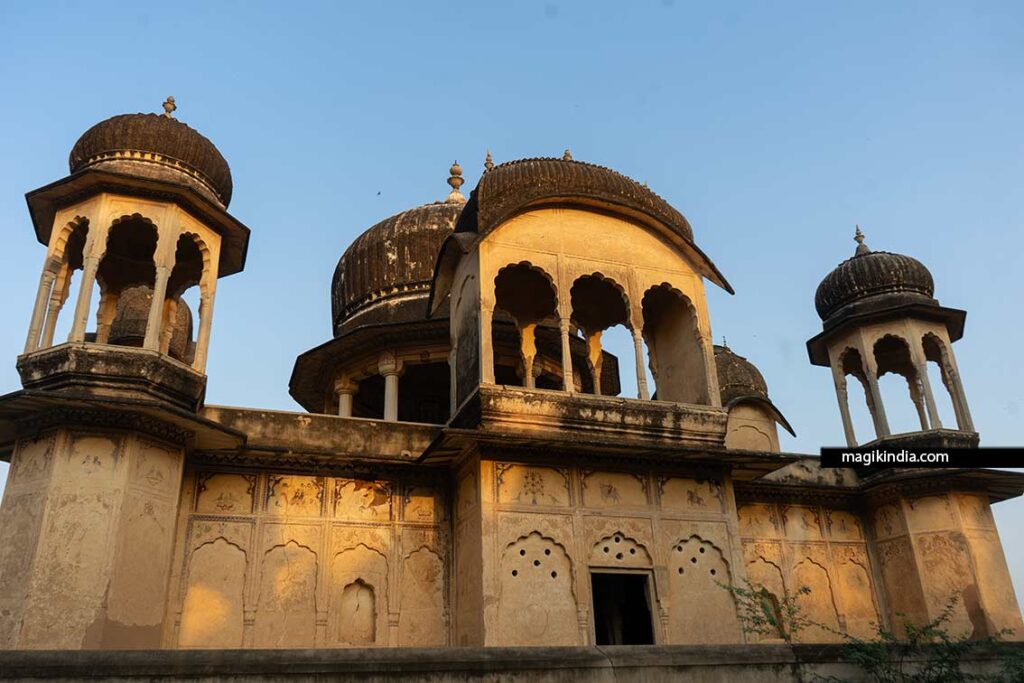
Just down the road from the village are several “chhatri” (cenotaphs). The one of Ram Dutt Goenka, built in 1888, has a dome painted with vibrant frescoes of scenes from, among others, the Ramayana and the Mahabharata.
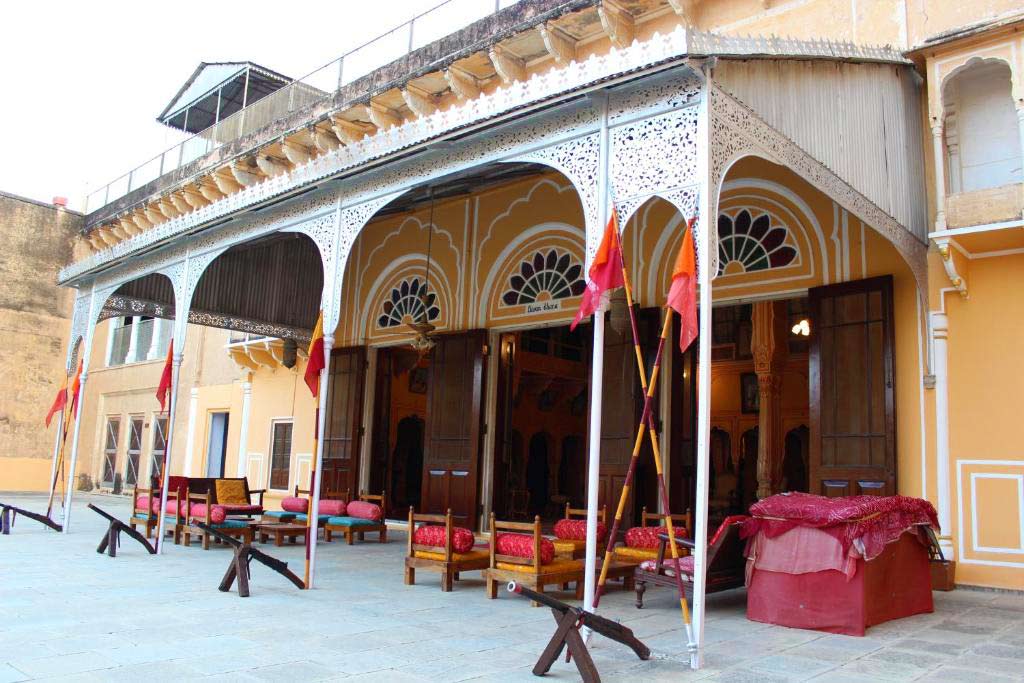
There is also a fort in Dundlod presently still occupied by the family of the Thakur Raghuvendra Singh. It may be opened to public from time to time. It is used as a hotel to people who are taking horse riding safaris with the maharajah and his daughter, Mallyka Singh.
Mandawa
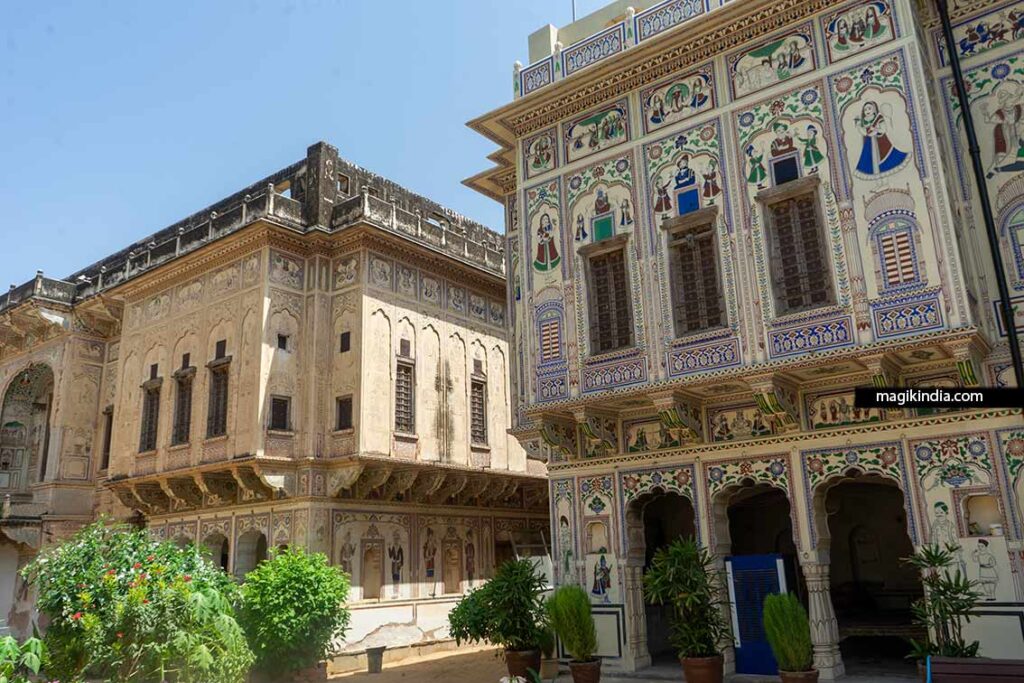
Established in the 18th century, Mandawa is the most touristic of the Shekhawati cities, this is where travelers usually put down their suitcases. Here, the most famous visit is the “Chokhani double haveli”, a mansion built with two adjacent wings in the late 19th century by the Chokhanis, prosperous merchants of Mandawa.
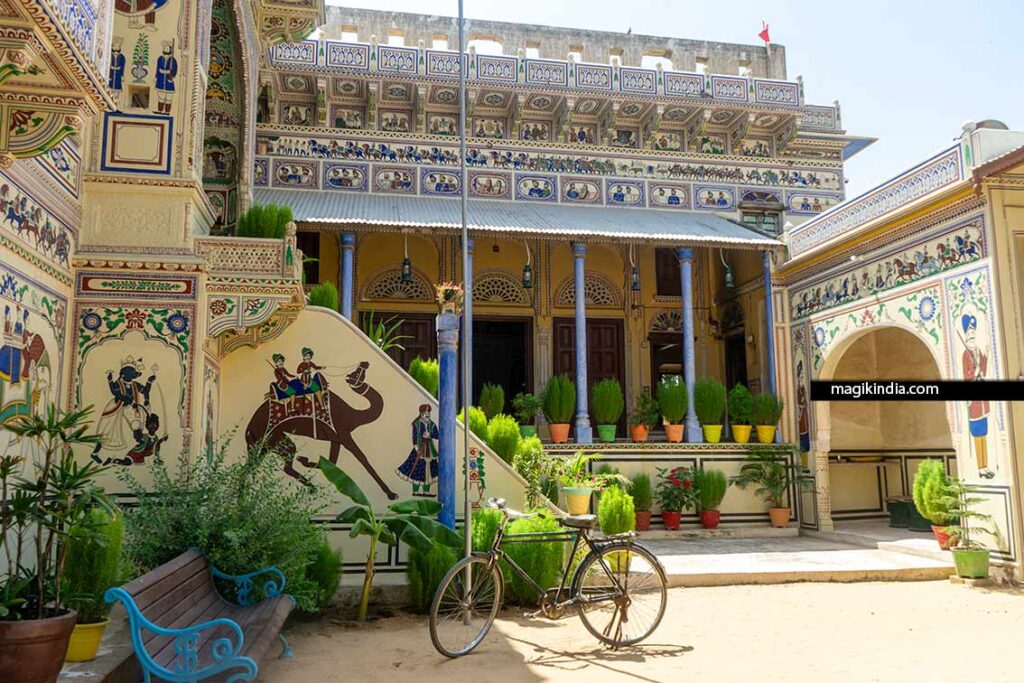
The fort is another popular place to visit in Mandawa. It was built by Newal Singh, the first descendant of the rulers of Shekhawati. Today, it has been converted into a heritage hotel.
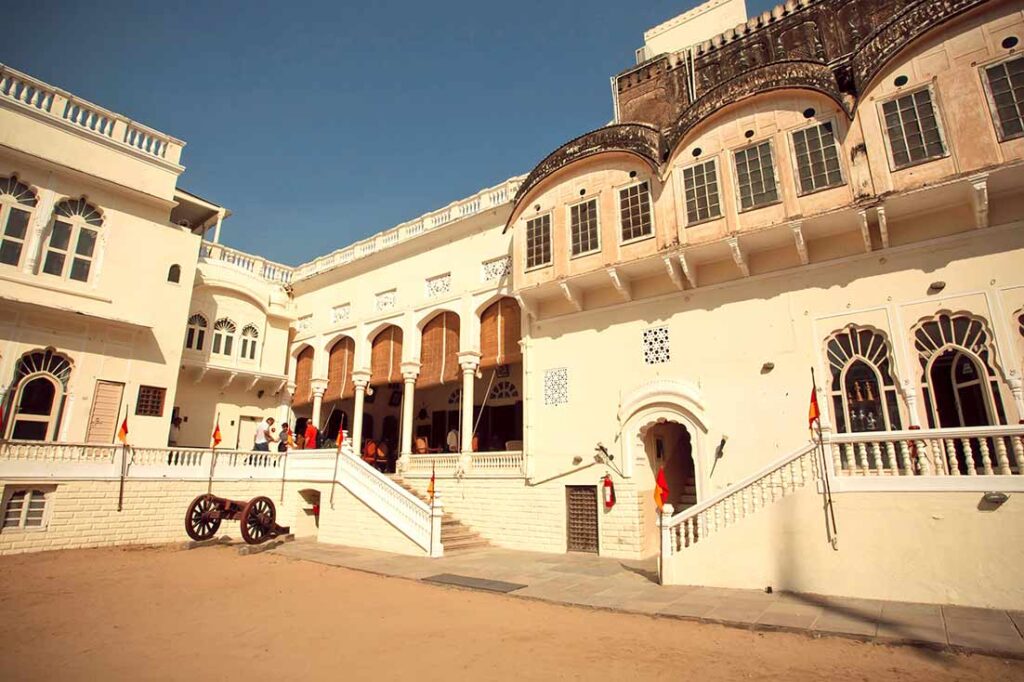
The haveli “Snehi Ram Ladia” is also worth a visit. Apart from its historical aspect, the house serves as an antique shop.
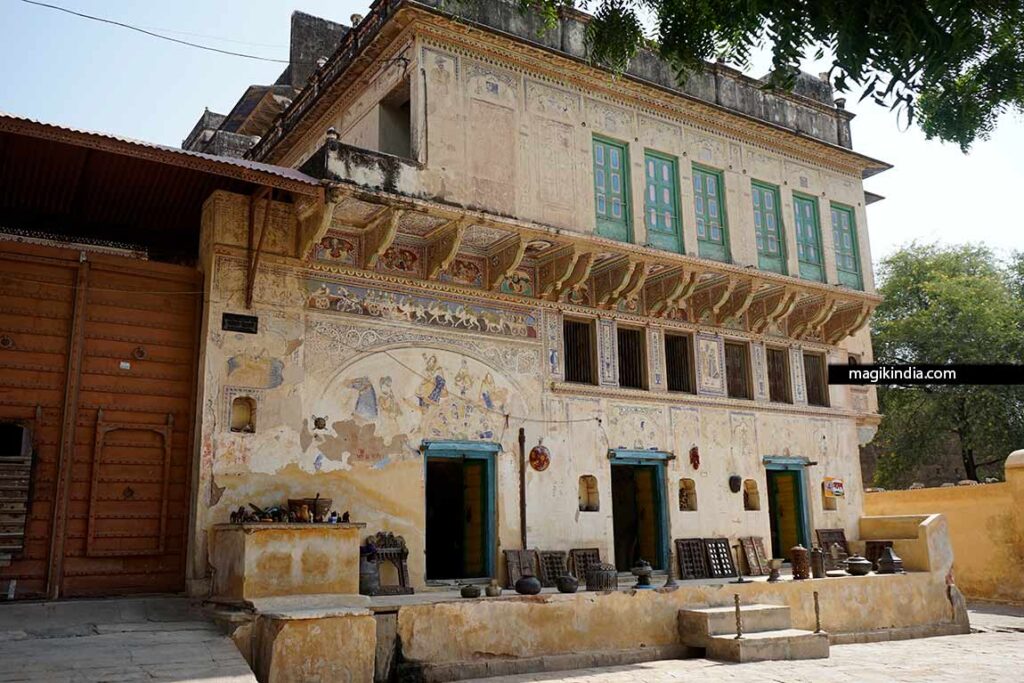
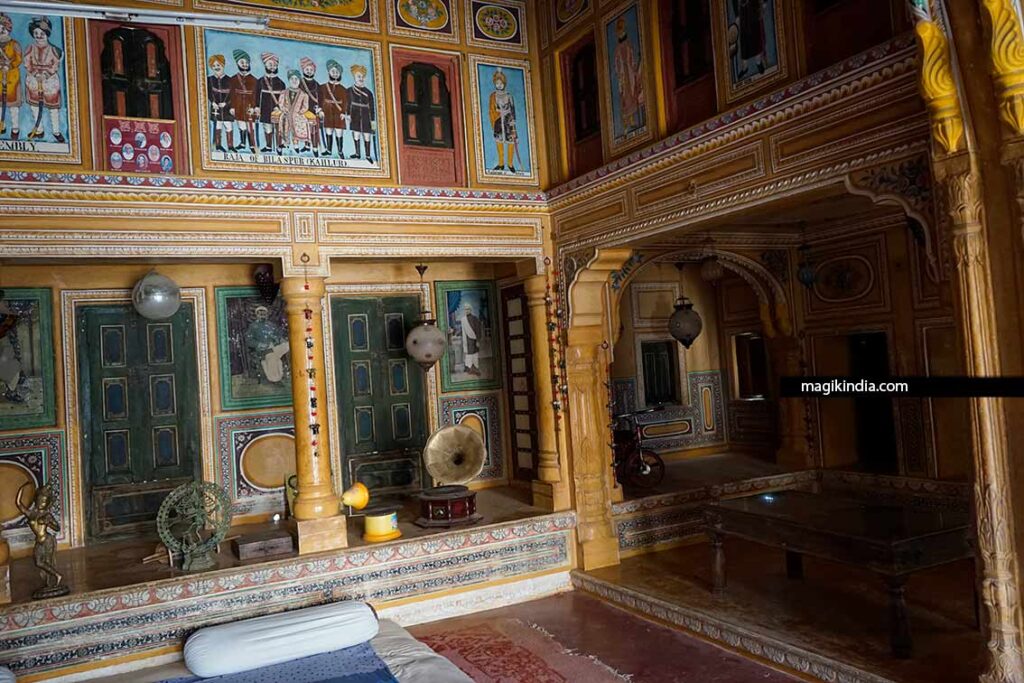
Jhunjhunu
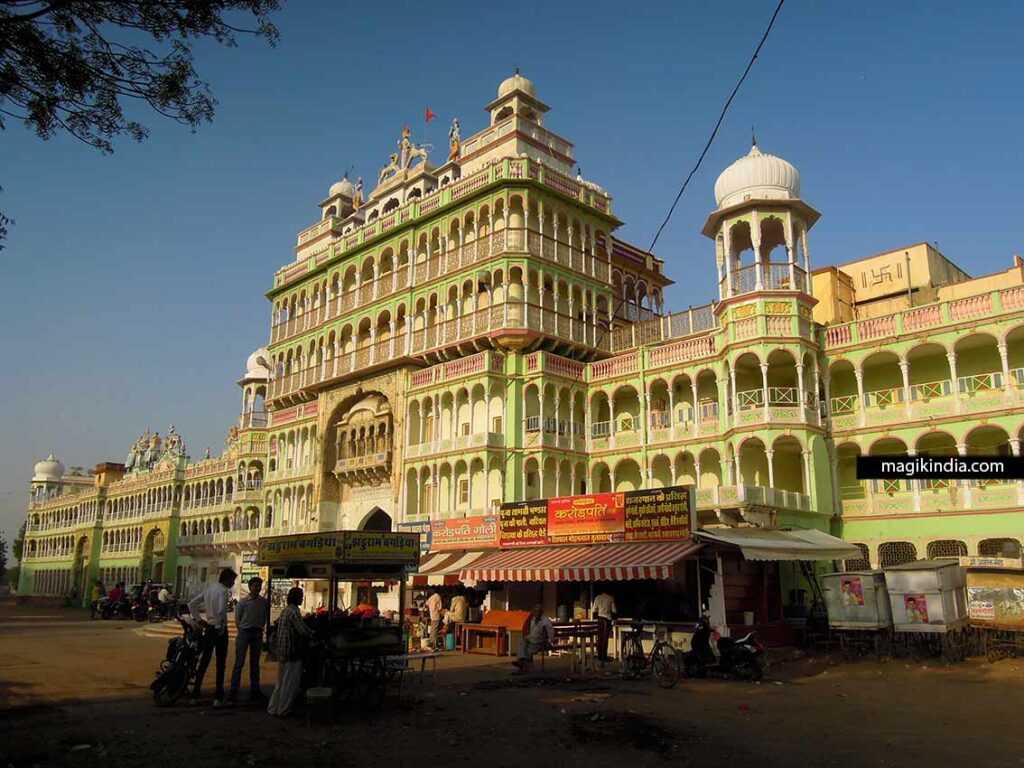
30 km northeast of Mandawa, we arrive at Jhunjhunu known mainly for its grandiose temple of “Rani Sati”. Rani Sati or Narayani Devi is a lady who lived between the 13th and 16th centuries and who immolated herself on her husband’s pyre. Several temples in Rajasthan are dedicated to her and commemorate her act.
Other monuments worth a look are the Modi & Tiberwala Haveli, Khetri Mahal, Sri Bihariji Temple and the Medtni Ranisa, a recently renovated stepwell.
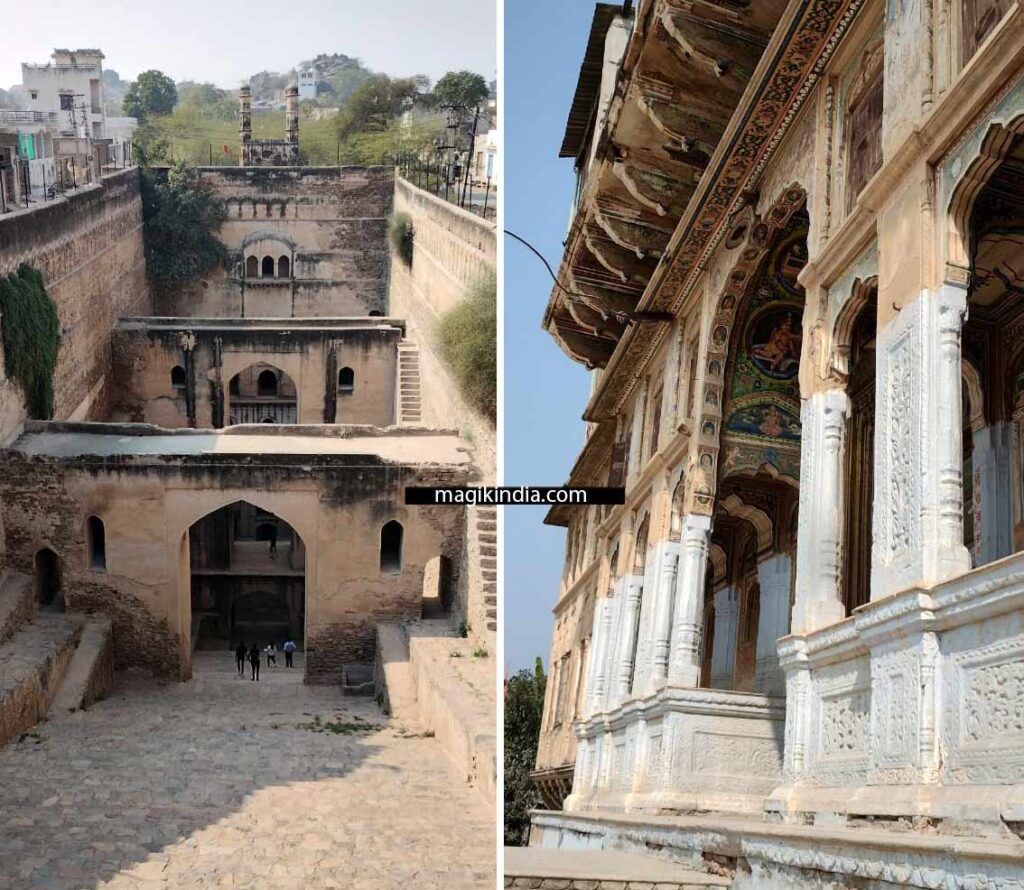
Churu
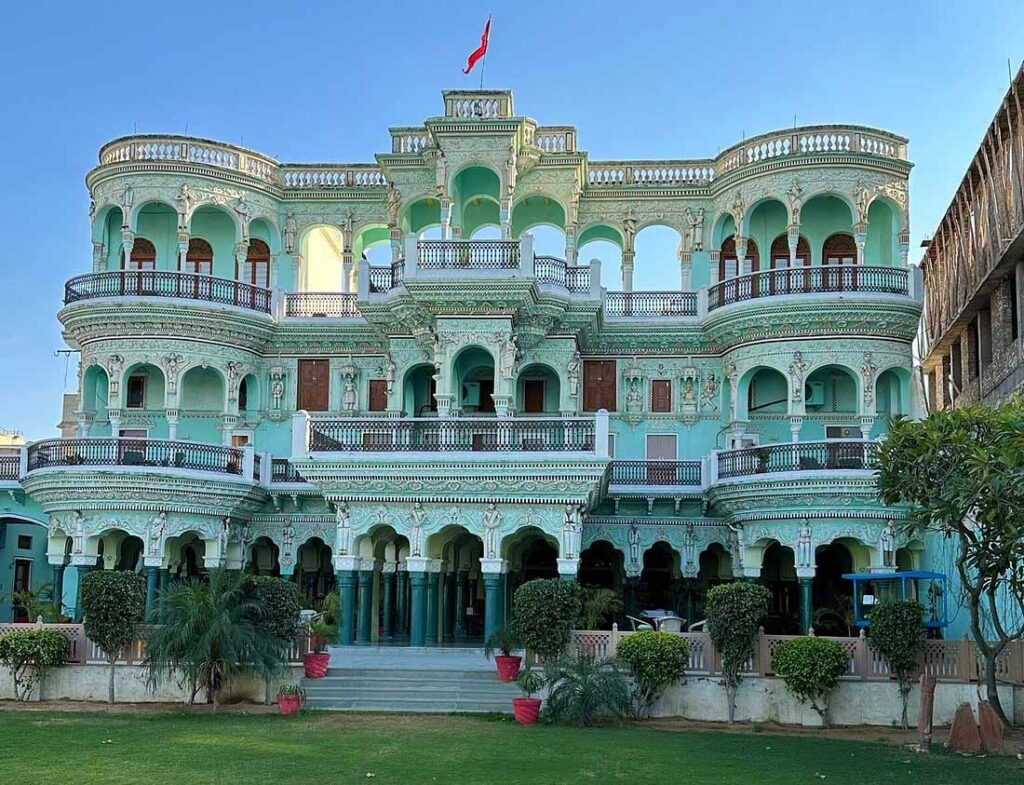
In the far north of Shekhawati lies the city of Churu. The name Churu comes from the Rajput ruler Choru Jat. The Rajputs were the main ruling dynasty in Churu and after the war of 1871 the city was annexed to Bikaner.
Churu is home to several notable places of interest including the Malji ka Kamra Hotel, the Sethani Ka Johara Pond and the fabulous Sri Shantinath Bhagwan Jain Temple.
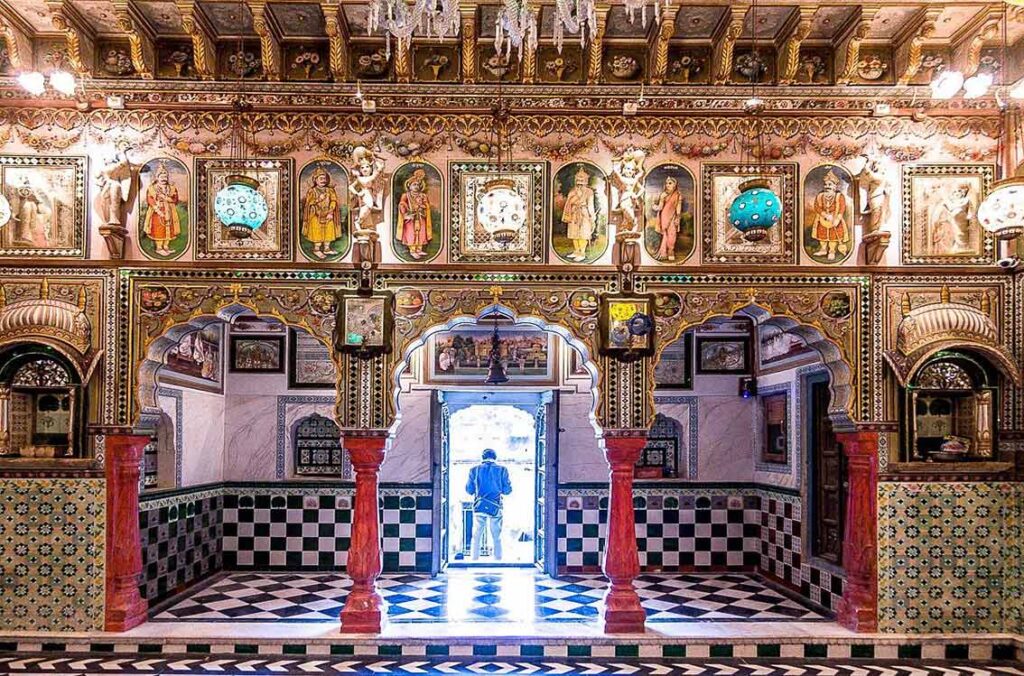
Mahansar
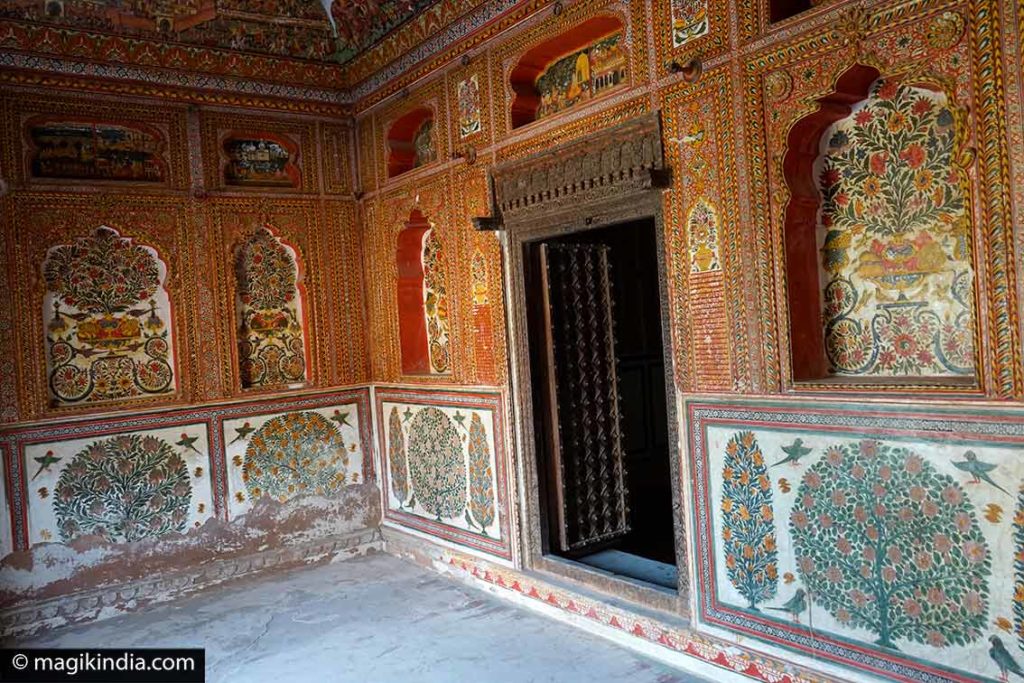
This hamlet lost in the countryside has a prestigious haveli: the Sona Chand Ki Dukan or “dwelling of gold and silver” built in 1850 by Sej Ram Poddar, a rich jeweler. The frescoes of the golden room interspersed with gold and floral motifs are of breathtaking refinement.
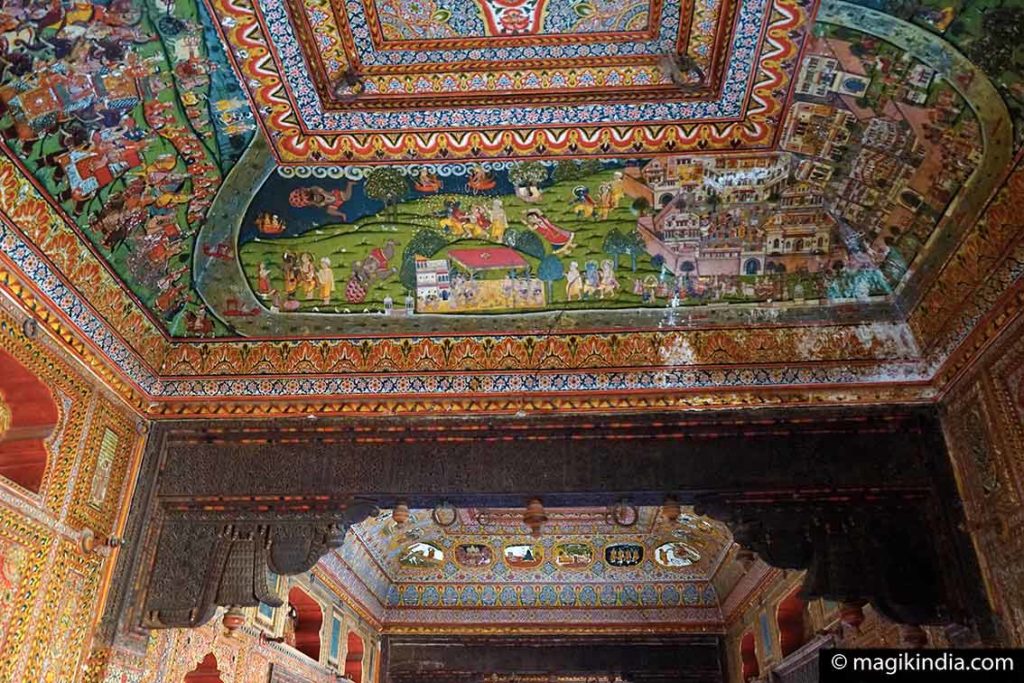
Ramgarh
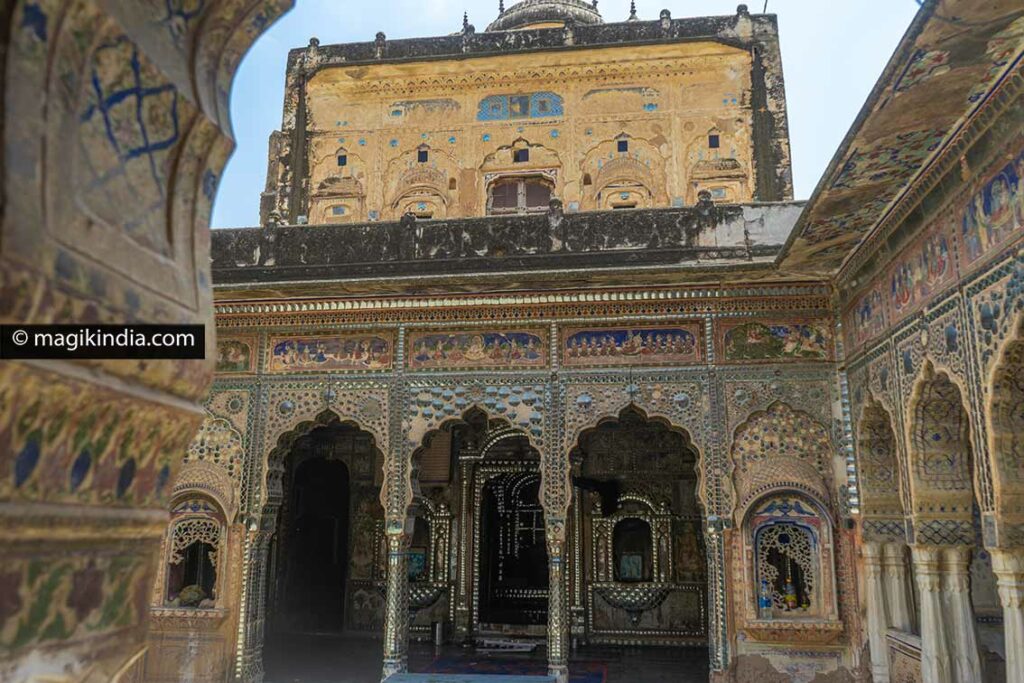
Ramgarh is, for me, the pearl of Shekhawati. If I had to visit only one place in this city, it would undoubtedly be its temple dedicated to Saturn (Shani); a real box of wonders composed of thousands of mirrors and delicate frescoes.
READ MY POST ABOUT RAMGARH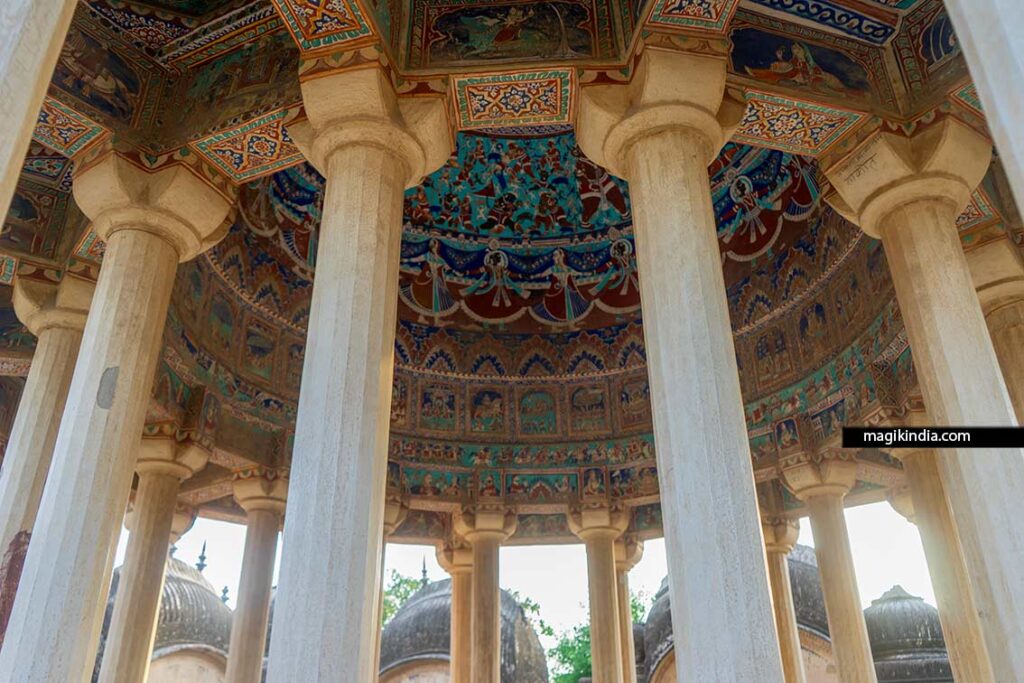
But this is not the only asset of the city, it is also dotted with many other temples, elegant havelis, “kua” wells with Persian towers and Chhatri (cenotaphs) covered with mythological frescoes. A must-see in Shekhawati.
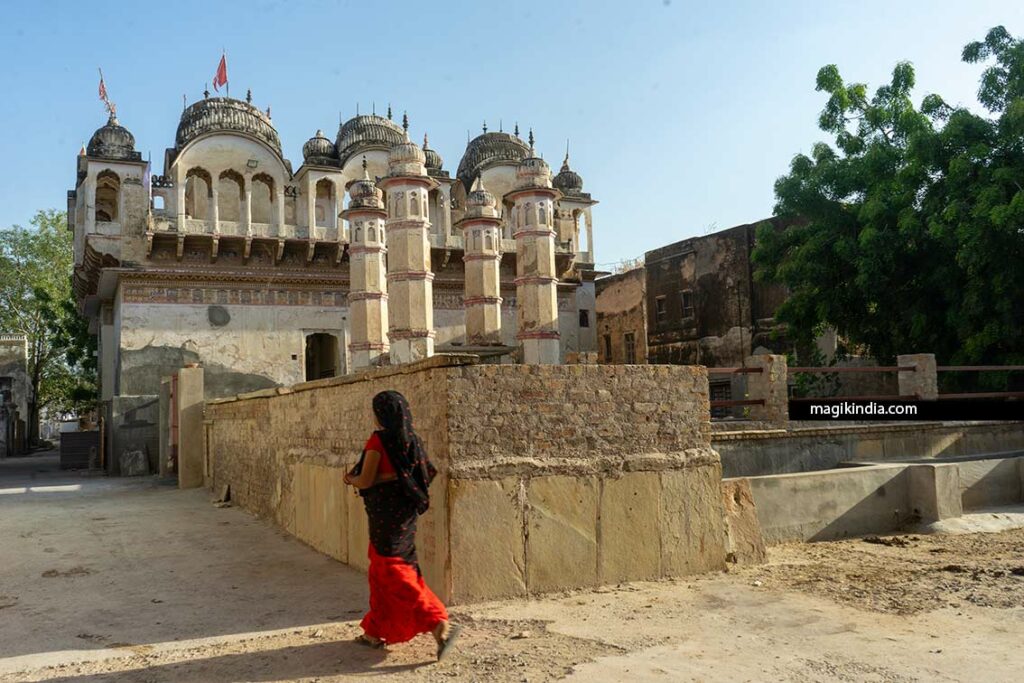
Fatehpur

Fatehpur is known for its haveli “Nadine Le Prince”, Nadine Le Prince is the descendant of the prestigious French painter Jean-Baptiste Le Prince. In 1998, the artist bought the haveli “Nand Lal Devra” built in 1802 by the Devras family, restored it entirely and created a hotel and a cultural center. However, for a few years now, the haveli has closed its doors. To be continued…
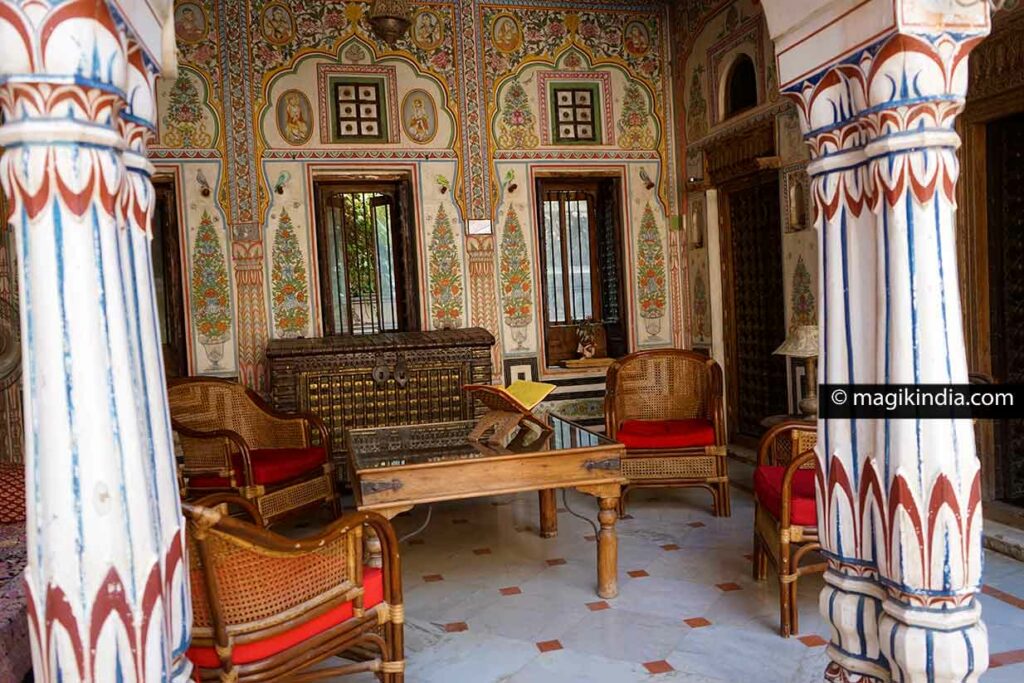
Other havelis around Nadine’s are still worth a visit, such as that of “Saraf” decorated with frescoes galore in shades of green, red and blue.
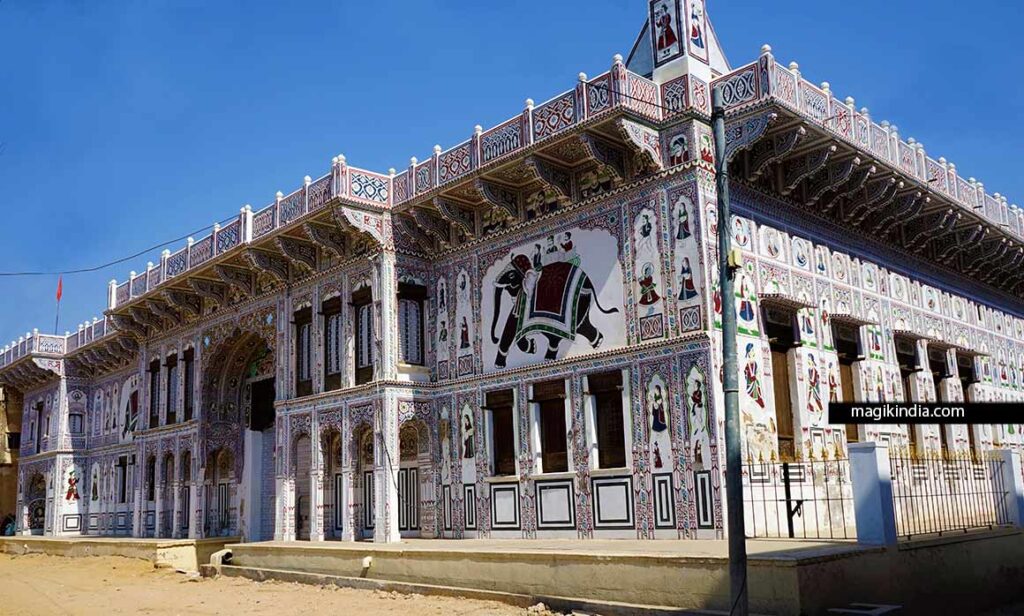
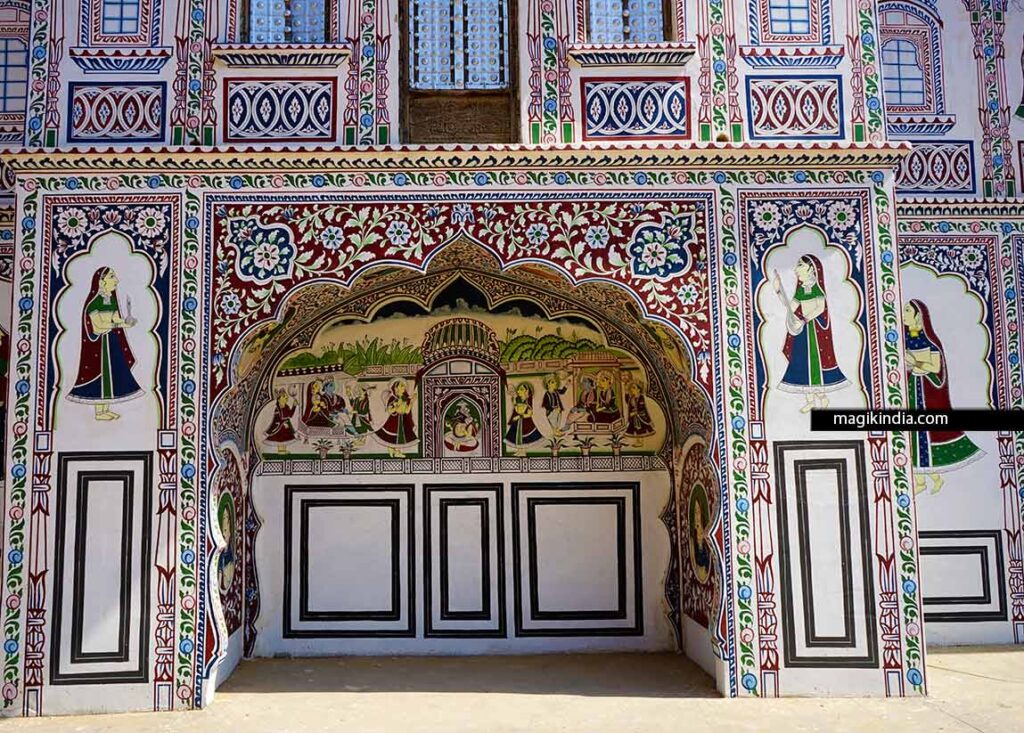
Sikar
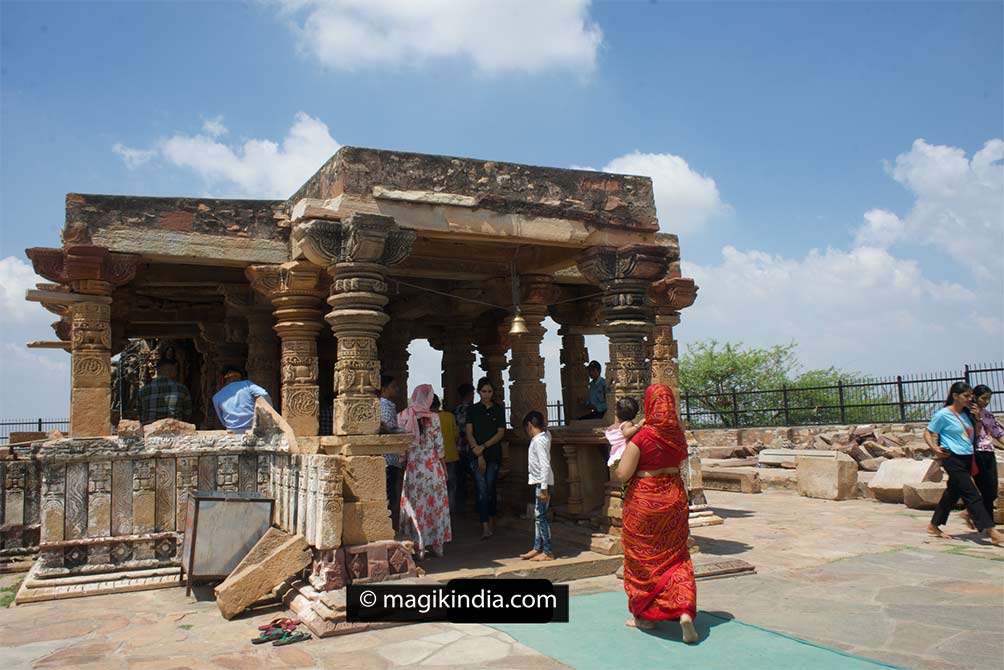
The city of Sikar is less spoiled in terms of its attractions. However, there is one place that I absolutely recommend: Harshnath. Located on the Harshagiri hill, at an altitude of 900 meters, the site consists of a group of temples, the oldest of which dates back to the 10th century AD…
KNOW MORE ABOUT HARSNATH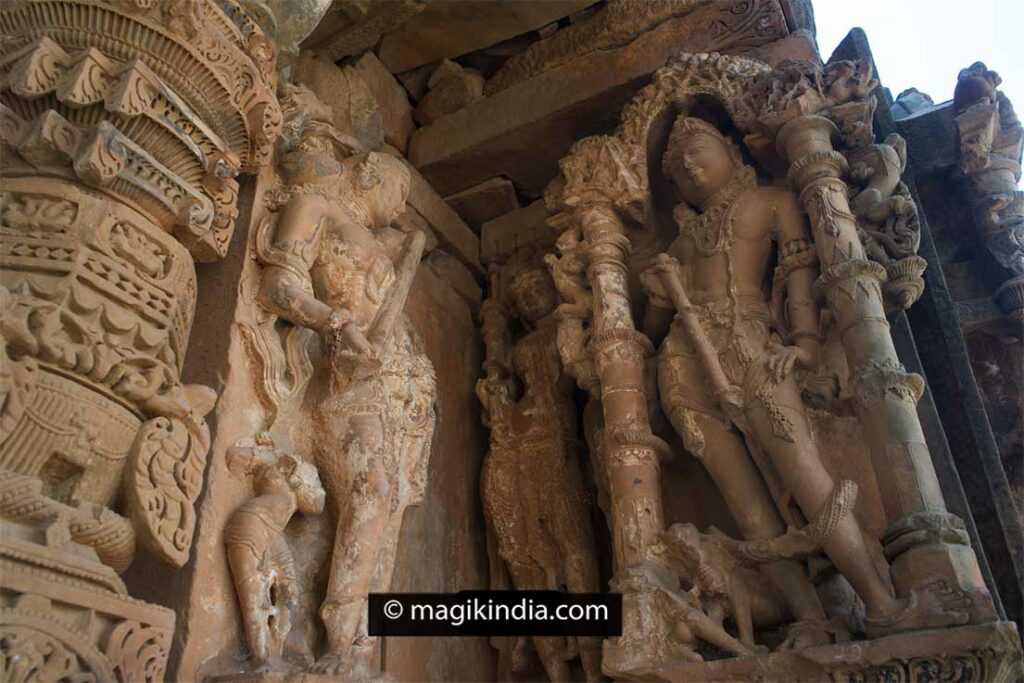
Lohargal

We retrace our steps to head towards Lohargal located 30 km from Nawalgarh. Lohargal is a major pilgrimage site nestled in the heart of the Aravalli mountains, between banyan trees and century-old mango trees. Lohargal is home to a temple dedicated to the sun god (Surya), its sacred pool attracts a considerable crowd of pilgrims for their ablutions.
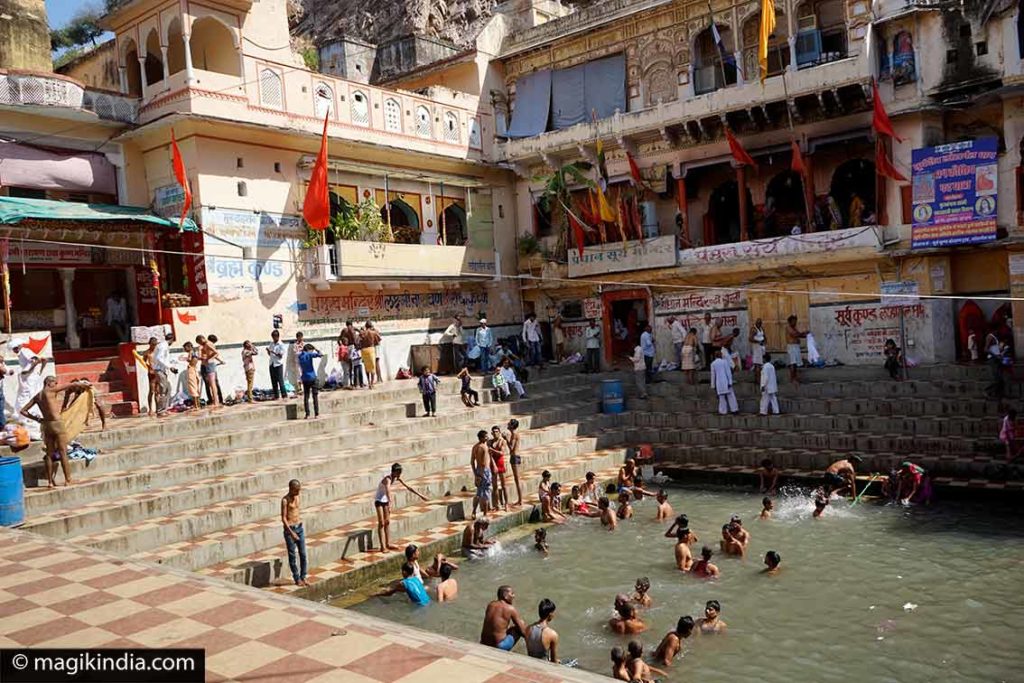
According to legend, Bhima, one of the heroes of the great epic Mahabharata, came to bathe here along with the mighty Pandava army after winning the battle of Kurukshetra. To wash away their crimes, the entire army plunged into the sacred pool and washed their blood-stained armour. A miracle happened and all the weapons melted in the water. Since then, the place is called “Lohargal” which literally means “melts iron”.
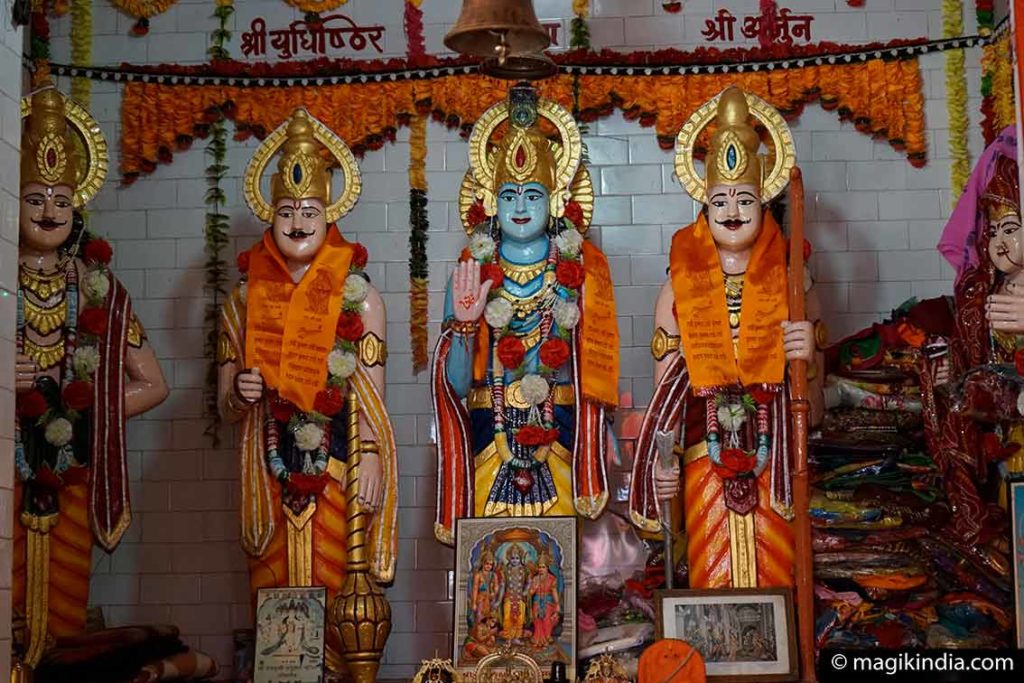
Lohargal is also known for its achaar (spicy condiments) and especially those made with green mango.
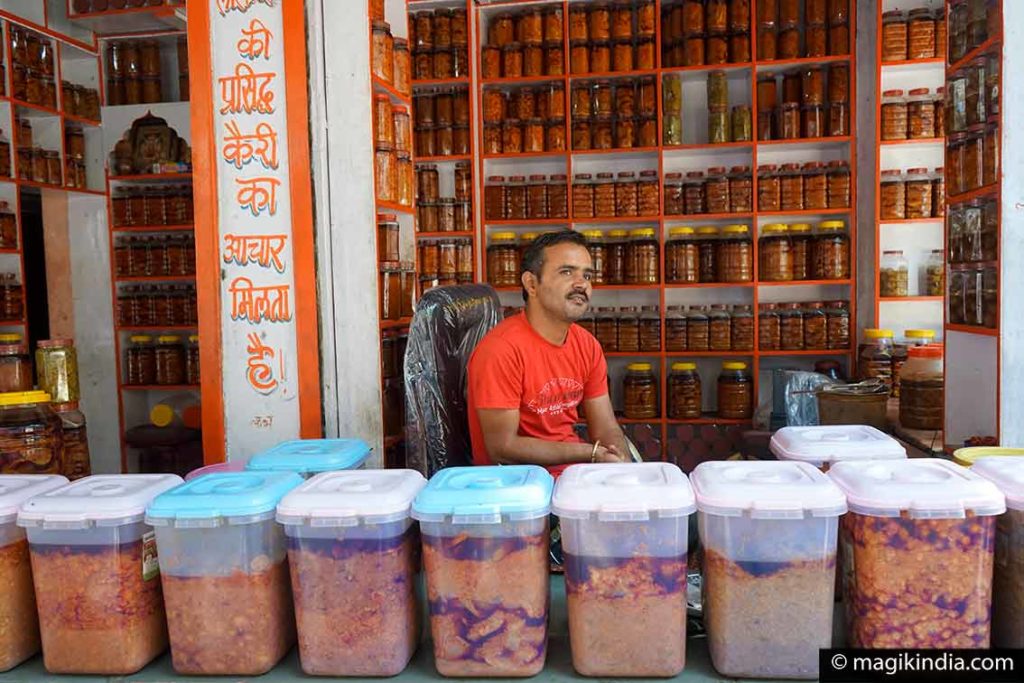
Parasrampura
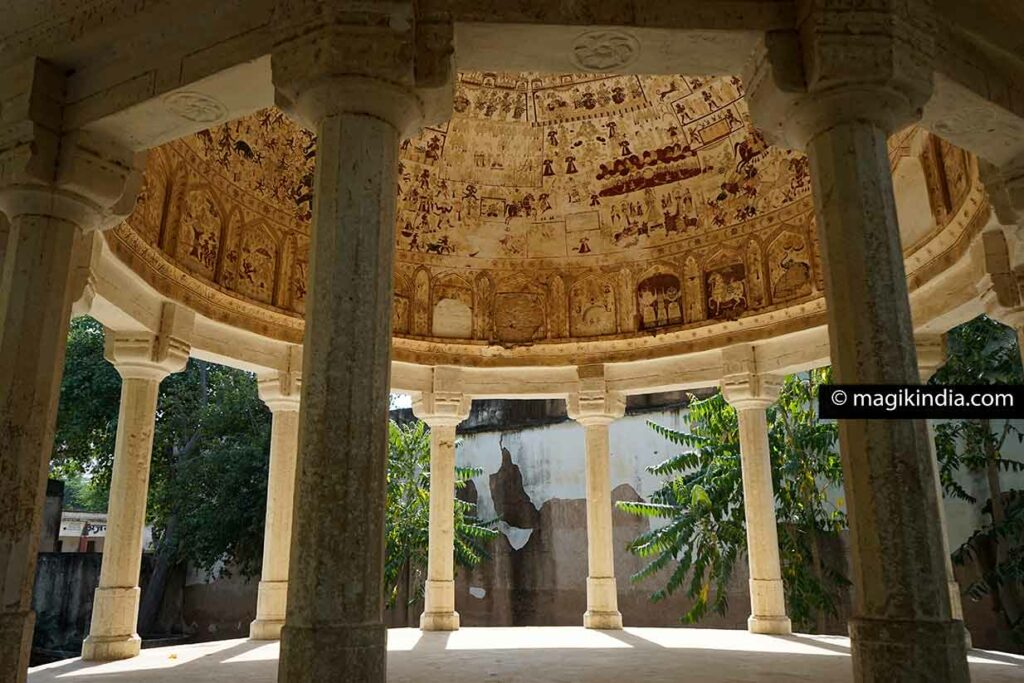
On the road between Lohargal and Nawalgarh, one last stop is a must: the Chhatri of Parasrampura. It houses the oldest frescoes in the region, illustrating in a simple yet exquisite way the princely life of the Thakurs of the 18th century and episodes from Hindu mythology.
Also worth visiting in Parasrampura is the village haveli and its temple dedicated to Krishna, both decorated with beautiful frescoes.
KNOW MORE ABOUT PARASRAMPURA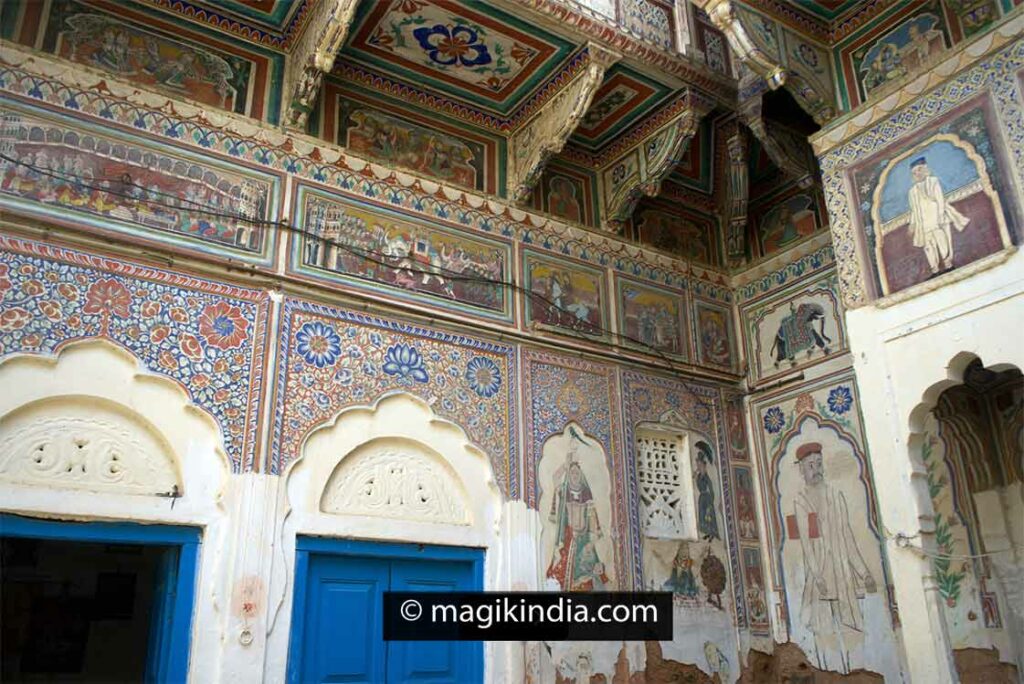
Shekhawati is a real treasure in the land of kings. We invite you to come and discover this region accompanied by a cultural guide. See you soon!

Dinesh Sharma, a native of Nawalgarh, is one of the best official cultural guides of the Shekhawati region and the co-director of the MATHINI TRAVEL agency. With over 10 years of experience in the tourism sector, there is no corner of Shekhawati that escapes him. He will be keen to share with you his passion for this unique region in India.
Whatsapp: +91 6350289836

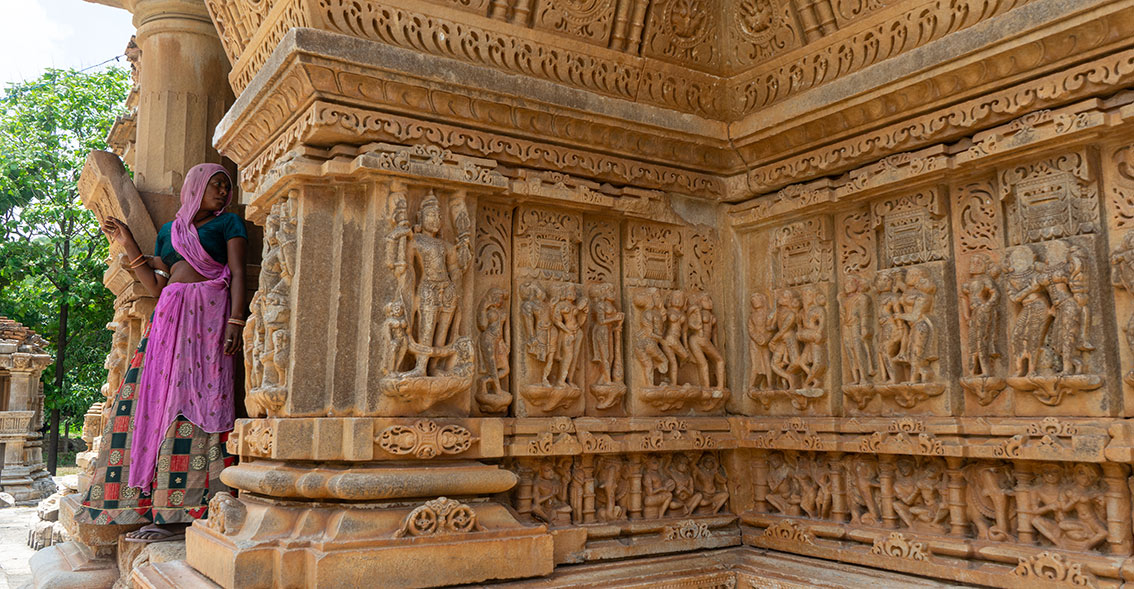

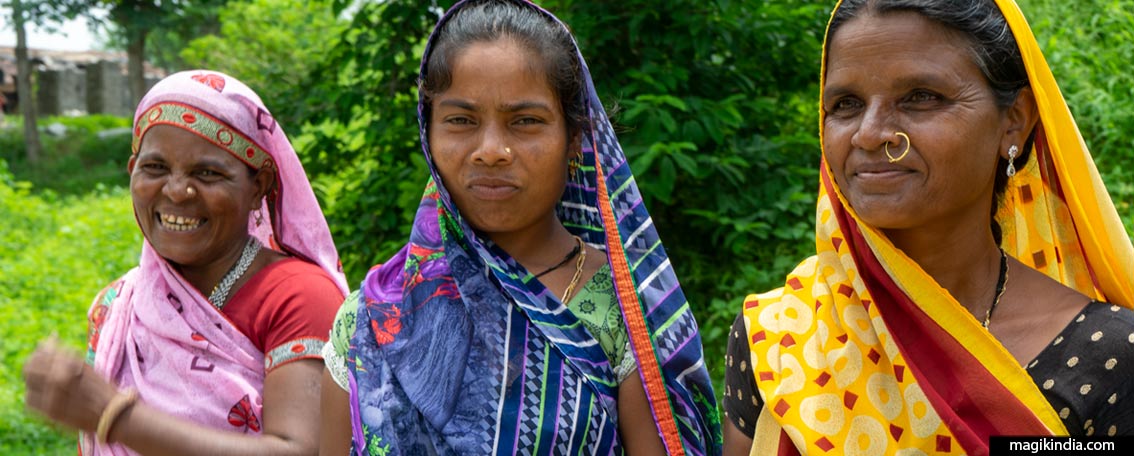

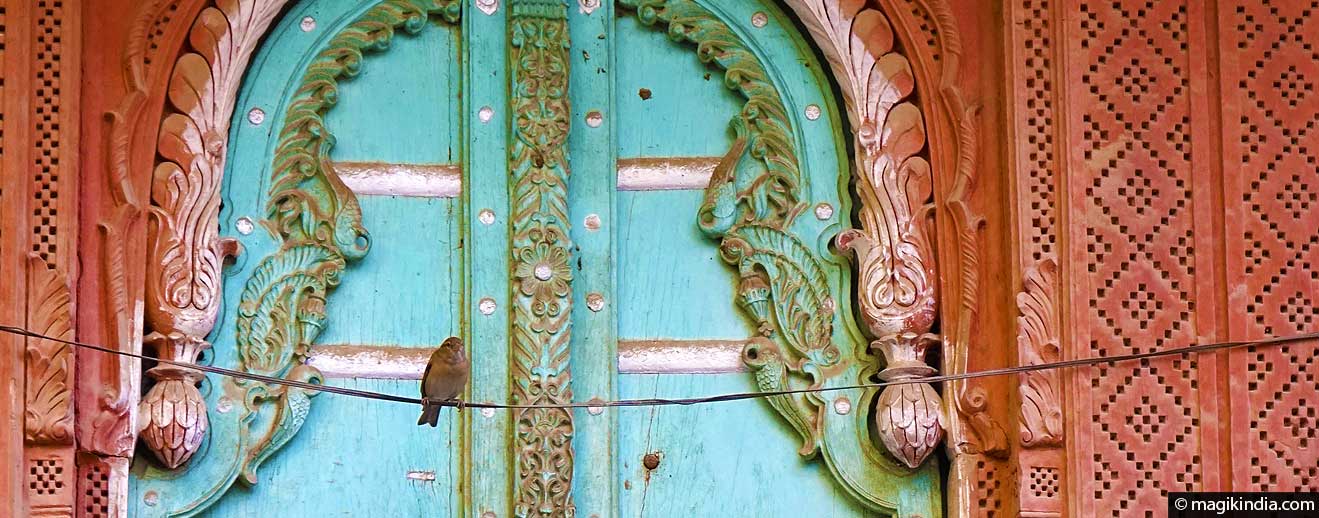
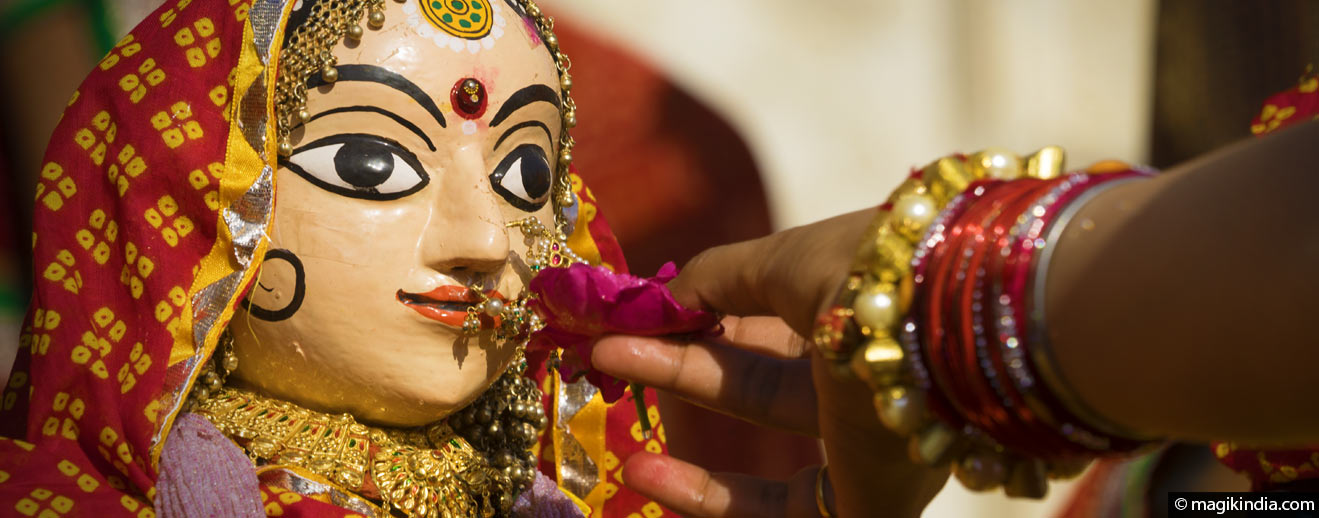
In Shekavati which plase to visit
Hi Anand, places to visit are written on the page 🙂